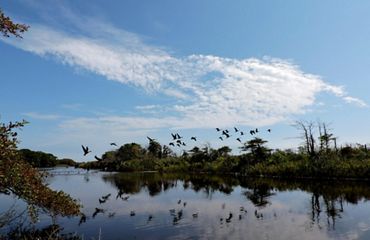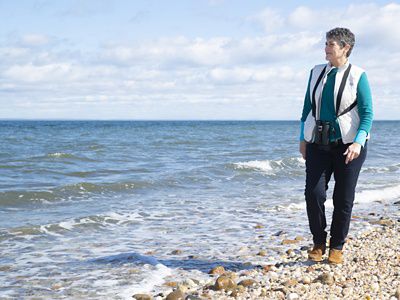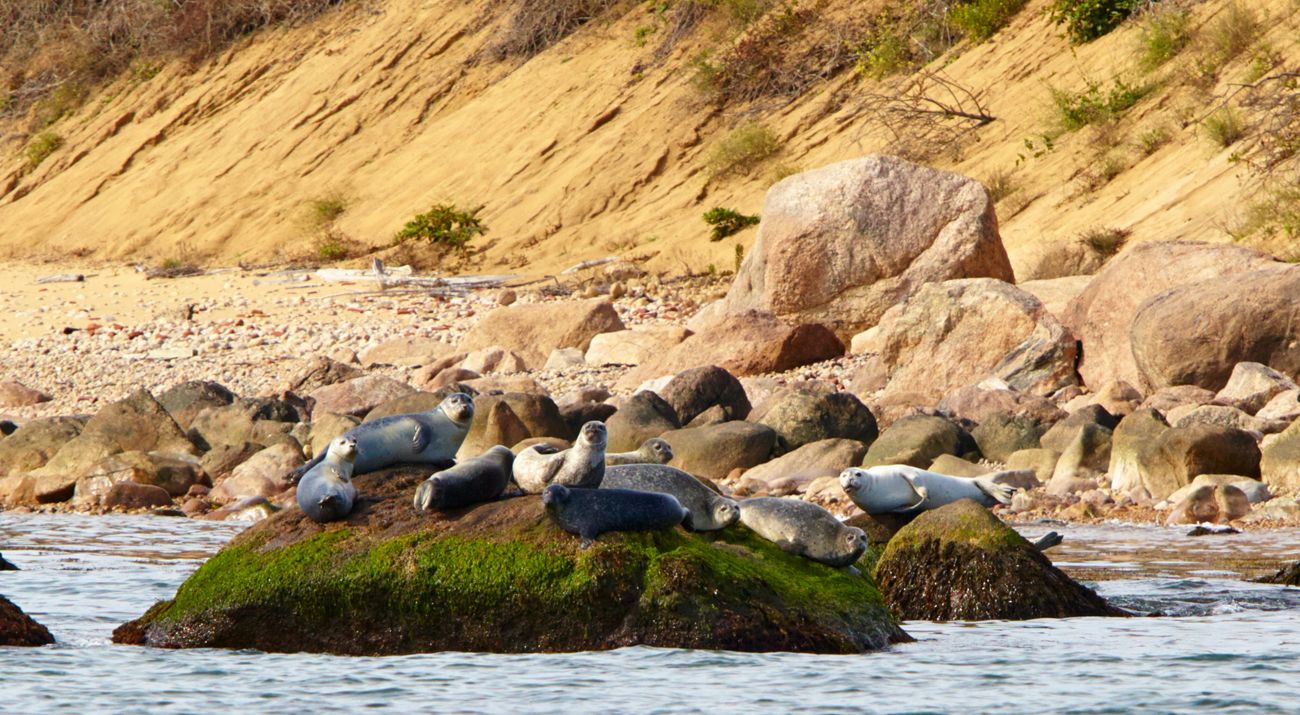A Bright Future for Plum Island
Coalition wins key chance to preserve a secluded island and its many stories
“All islands carry a certain mystery, but Plum Island has more than its share of stories and secrets,” says Marian Lindberg, a conservation specialist for The Nature Conservancy. Located in Long Island Sound between Connecticut and New York, Plum Island is historically Algonquin territory. In the 19th century, it became home to a lighthouse and an Army post. In 1914, it was the site of an infamous court martial, and since the 1950s it has hosted a federal laboratory conducting classified research on contagious animal diseases, especially foot and mouth disease.
While Plum Island sits just 100 miles east of New York City, its relative isolation for 70 years has allowed unique plants and wildlife to flourish in an otherwise heavily developed region. But in 2008 the unthinkable happened, this national treasure—with its vast historic, cultural and natural resources—was designated for sale. The research facility, managed by the U.S. Department of Homeland Security, was slated to relocate its operations to Kansas. Under usual circumstances this would have prompted an offer of the island to National Parks Service and other federal agencies, then to New York State and local governments, but the normal federal process to repurpose the island was skirted, and the island was instead slated to be auctioned to the highest bidder.
A Crown Jewel of the Atlantic Located 100 miles east of New York City, the island's relative isolation for 70 years has allowed unique plants and wildlife to flourish.
Now, after 12 years of collaboration, The Nature Conservancy and partners are heralding a landmark win: The Omnibus Budget bill passed by Congress on December 21 will remove Plum Island from the auction block. This victory paves the way for the island to be saved, and for the critical work of preserving this extraordinary place to begin.
Quote: Louise Harrison

It’s amazing that this small island so close to New York City provides a connection to animals travelling up to the Arctic who find a good place to rest in our backyard.

Safeguarding a Stunning Cluster of Life
Louise Harrison, NY Natural Areas Coordinator for Save the Sound, first visited Plum Island in 2010 when she was working as the U.S. Fish and Wildlife Service liaison to the Long Island Sound National Estuary Program. “It was eye-popping,” she recalls. “Looking down from a bluff at boulders covered with seals was a window into a natural world few of us get to witness. It’s amazing that this small island so close to New York City provides a connection to animals travelling up to the Arctic who find a good place to rest in our backyard.”
Lindberg recalls a similar experience: “You can feel the island’s magic before you reach the dock. Then you get this 360-degree view from the bluffs and a thrilling feeling that you are looking at the same vistas that people saw hundreds, even thousands, of years ago. The sense of human and natural history is profound. And from a conservation perspective, it is hard to overstate the value of 820 acres at the center of one of our country’s most urbanized estuaries.”


Estuaries are intricate aquatic worlds where rivers meet the sea, providing nurseries for young fish, feeding grounds for birds and mammals, and myriad natural benefits for people. Plum Island hosts one of the few remaining seagrass meadows in Long Island Sound, the largest seal haul-out area in southern New England, 228 bird species, and oxygen-rich waters that are home to federally-listed marine species such as Kemp’s Ridley sea turtles and Atlantic sturgeon.
“It’s a microcosm of everything that Long Island Sound brings to us,” adds Harrison. “It’s all right there in both its fragility and resilience.”
In addition to its natural resources, Plum Island’s storied past inspired The Nature Conservancy and partners to focus on preserving the island’s unique human history as well. “Preventing the public sale of Plum Island to private interests and developers prevents irreversible harm to archeological sites that can help us and our local first nations better understand the role of Plum Island in their forebears’ culture,” says Lindberg. “And the remains of Fort Terry can teach us about changes in national defense.”


Persistence and Teamwork Prevail
Since launching 10 years ago, the Preserve Plum Island Coalition has grown to include 116 members across New York and Connecticut, and it has never stopped fighting. Thanks to the extraordinary bipartisan effort among members of Congress, federal agencies, state and local governments, conservation organizations, cultural groups and historic preservation groups, Plum Island can now be preserved and potentially opened to the public.
“What’s made this effort successful is that we pursued a goal together in a unified way,” says Harrison. “Competition was put aside, and everyone used their strengths to make it happen.”
Envision Plum Island
The report details a vision and plan to protect jobs, endangered wildlife and more.
DownloadThe Nature Conservancy contributed the work of its land protection specialists and policy experts and obtained detailed analyses by ecologists and appraisers to help imagine what the future for Plum Island could be. This summer, in a report requested by Congress, The Nature Conservancy, Save the Sound and the Preserve Plum Island Coalition released a vision and plan for the island that includes sanctuary areas for wildlife, preservation of the lighthouse and historic fort, an educational facility and a campus for research. This future would protect jobs in both states and allow residents and tourists to take guided tours of the island for the first time.
Even a global pandemic couldn’t stop the coalition’s work toward this audacious goal. “Initially we were afraid we wouldn’t succeed this year as the focus was, rightly, on hunkering down to protect our families and each other,” says Harrison. “But in this difficult time, people were also re-learning the importance of nature.”
“There have been many myths about Plum Island, but people will be surprised to learn that the island’s best kept secret is its natural beauty and history,” Lindberg adds. “We want people to be able to discover and study those treasures. How land is used over time tells a story, and good stewards can inspire people with Plum Island’s many stories.”




